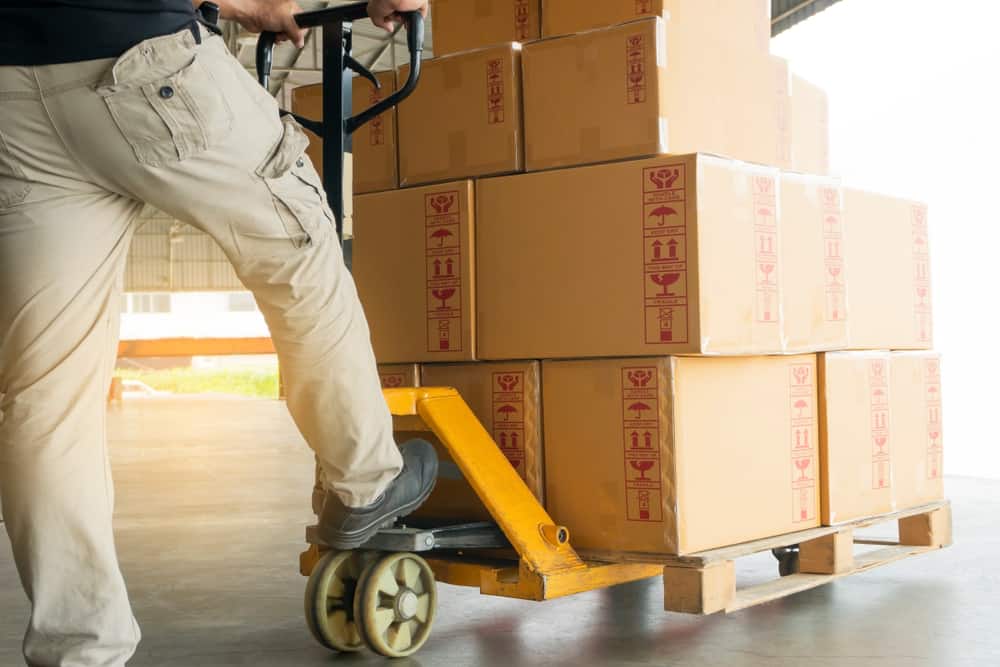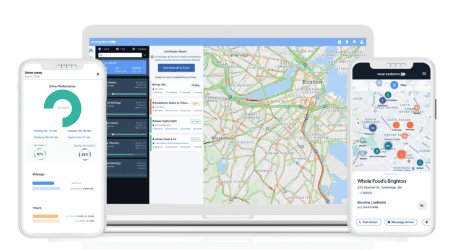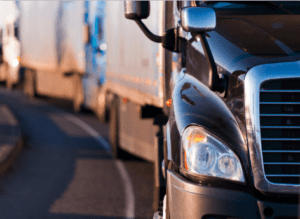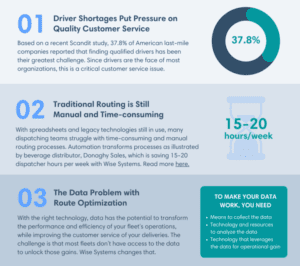What Causes Issues With Last-Mile Delivery?
Delivery Costs
It has been estimated that more than half of the total transportation cost for a shipment is spent on the last mile. When shipping a large number of goods from one port to another, or one hub to another, the infrastructure is already there. However, when shipments need to be broken down into small, individualized packages and disseminated to various customers and clients, it becomes much more complicated.
Delivery vehicles have little to worry about when driving on the highway; this network is designed for efficiency and has existed for decades. Leaving the highway is when problems arise. Navigation, local traffic, multiple stops, weather, gate codes, and similar issues can all lead to an increase in mileage and time on the road. The only way to solve this is with expert routing, which requires immense amounts of data, mobile and cloud infrastructure, and analysis via machine learning.
Time Constraints
Another challenge in last-mile delivery operations is late deliveries. A business’s reputation with its customers is influenced by its ability to meet delivery timing commitments. Customers have become accustomed to rapid delivery for just about anything they may need or want. Because of this, businesses have adopted numerous process and technology improvements — both within their warehouses and in their delivery operations — to meet these expectations, including JIT (just in time) or drop-shipping models, as well as waveless operations and numerous other innovations. In this new environment, customers expect clear and accurate ETAs. Everything up to the last mile is relatively easy to predict, but the processes and technology that many teams use for shipping are decades old now and don’t meet the demands of last-mile consumers. In order to improve on-time performance for last-mile deliveries and meet customer time constraints, modern cloud-based technology is required.
Communication
Client communication in last-mile delivery is paramount. Regardless of the purchase price, when customers order from a retailer or a local pizza chain, they now expect automated updates or a live feed of where their delivery is geographically. While that has become the norm for people in their personal lives, it is only starting to be adopted by many business-to-business and business-to-consumer operations.
Knowing exactly where a shipment is and/or when it will arrive is the emerging standard for customer communication and improves customer service significantly for last-mile delivery.








 There are a variety of ways that last-mile delivery software can be leveraged to improve relationships between a business and its customers.
There are a variety of ways that last-mile delivery software can be leveraged to improve relationships between a business and its customers. At the core of the platform is the AI-driven Dynamic Optimization Engine that continuously ingests data from operations and makes real-time decisions to improve fleet efficiency. Wise Systems’ software is designed to support any routing strategy from static, to dynamic, to a hybrid static + dynamic hybrid.
At the core of the platform is the AI-driven Dynamic Optimization Engine that continuously ingests data from operations and makes real-time decisions to improve fleet efficiency. Wise Systems’ software is designed to support any routing strategy from static, to dynamic, to a hybrid static + dynamic hybrid.


